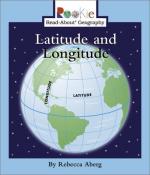|
This section contains 749 words (approx. 3 pages at 300 words per page) |

|
The concepts of latitude and longitude create a grid system for the unique expression of any location on Earth's surface.
Latitudes—also known as parallels—mark and measure distance north or south from the equator. Earth's equator (the great circle or middle circumference) is designated 0° latitude. The north and south geographic poles respectively measure 90° north (N) and 90° south (S) from the equator. The angle of latitude is determined as the angle between a transverse plane cutting through Earth's equator and the right angle (90°) of the polar axis. The distance between lines of latitude remains constant. One degree of latitude equals 60 nautical miles (approximately 69 statute miles, or 111 km).
Longitudes—also known as meridians—are great circles that run north and south, and converge at the north and south geographic poles. As the designation of 0° longitude is arbitrary, international convention, long held since the days of...
|
This section contains 749 words (approx. 3 pages at 300 words per page) |

|


